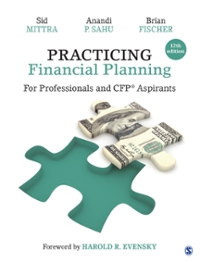What are the accounting policy alternatives that the company has when it comes to income producing properties, hotel properties and real estate under development properties?
Basis of Presentation The Company's consolidated financial statements are prepared on a going concern basis and have been presented in Canadian dollars rounded to the nearest thousand unless otherwise indicated. The consolidated financial statements are prepared on a historical cost basis, except for real estate properties and certain financial instruments that are measured at fair value. The accounting policies set out below have been applied consistently to all periods presented in these consolidated financial statements unless otherwise indicated.Real Estate Properties Real estate properties include residential, retail, ofce and industrial properties held to earn rental income and for capital appreciation and properties or land that are being constmcted or developed for future use as income producing properties. Income Producing Properties Income producing property that is acquired as an asset purchase and not as a business combination is recorded initially at cost, including transaction costs- Transaction costs include transfer taxes, professional fees for legal and other services and initial leasing commissions, of which transfer tax and professional fees represent the majority of the costs. Subsequent to initial recognition, income producing properties are recorded at fair value. The changes in fair value for each reporting period will be recorded in the consolidated statements of income. In order to avoid double counting, the canying value of income producing properties includes straight-line rent receivable, tenant improvements, tenant incentives, capital expenditures and direct leasing costs since these amounts are incorporated in the appraised values of the real estate properties. Fair value is based on external and internal valuations using recognized valuation techniques, including the direct capitalization of income and discounted cash ow methods. Recent real estate transactions with characteristics and location similar to the Company's assets are also considered- Tenant improvements include costs incurred to meet the Company's lease obligations and are classied as either tenant improvements owned by the landlord or tenant incentives. When the obligation is determined to be an improvement that benets the landlord and is owned by the landlord, the improvement is accounted for as a capital expenditure and included in the carrying amount of income producing properties in the consolidated balance sheets. Leasing costs include incremental costs associated with leasing activities such as external leasing commissions. These costs are included in the carrying amount of income producing properties in the consolidated balance sheets. Hotel Properties Hotel properties comprise land, buildings, furniture, xtures and equipment, and other and are stated at cost less accumulated amortization and any impairment losses. The application of this policy requires an estimate of the useful life of the asset and its residual value- The revenue and operating expenses of the hotel properties are included within net operating income in the consolidated statements of income. The Company provides for amortization of hotel properties so as to apply the cost of the assets over the estimated useful lives as follows: Method Rate m Fumtture, xtures and equipment Straight-line 5 to 10 years other Straight-line 5 to 10 years Properties Under Development The cost of properties under development includes all expenditures incurred in connection with the acquisition, including all direct development costs, realty taxes and other costs to prepare it for its productive use and bonowing costs directly attributable to the development. Borrowing costs associated with direct expenditures on properties under development or redevelopment are capitalized. Borrowing costs are also capitalized on the purchase cost of a site or property acquired specically for redevelopment in the short term if the activities necessary to prepare the asset for development or redevelopment are in progress- Borrowing costs are capitalized from the commencement of the development until the date of practical completion. The capitalization of borrowing costs is suspended if there are prolonged periods when development activity is intenupted. The Company considers practical completion to have occuned when the property is capable of operating in the manner intended by management. Generally, this consideration occurs on completion of construction and receipt of all necessary occupancy and other material permits. Where the Company has preleased space as of or prior to the start of the development and the lease requires the Company to construct tenant improvements that enhance the value of the property, practical completion is considered to occur on completion of such improvements. Real estate properties under development are measured at fair value, with changes in fair value being recognized in the consolidated statements of income when fair value can be reliably determined









